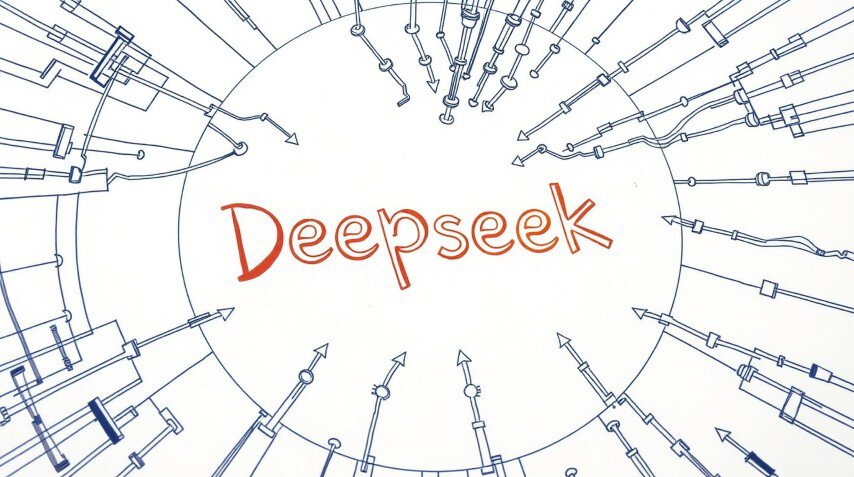Introduction: The Rise of DeepSeek AI

In the rapidly evolving world of artificial intelligence (AI), one name has recently grabbed headlines: DeepSeek AI. Founded in 2023 by Liang Wenfeng in Hangzhou, China, the company has emerged as a formidable competitor to established giants like OpenAI and Google DeepMind. With its open-source approach, cost-effective innovations, and rapid advancements in large language models (LLMs), DeepSeek AI is reshaping the global AI landscape.
This article delves into DeepSeek AI’s origins, achievements, and implications for the future of AI technology and international competition.
What Is DeepSeek AI?
DeepSeek AI is a Chinese AI company that focuses on developing advanced large language models. Its mission is to make AI technology more accessible and transparent by embracing an open-source philosophy. Unlike many Western competitors, which rely on proprietary models, DeepSeek has committed to making its code and technical details publicly available.
Key Milestones:
- Founded: 2023 by Liang Wenfeng
- Headquarters: Hangzhou, Zhejiang, China
- Flagship Model: DeepSeek-R1 (launched January 2025)
DeepSeek-R1: A Technological Breakthrough
In January 2025, DeepSeek released its flagship model, DeepSeek-R1, which has garnered widespread acclaim for its efficiency and performance. Industry experts have noted that DeepSeek-R1 rivals the capabilities of leading models like OpenAI’s GPT-4.
Features of DeepSeek-R1:
- Performance: Matches or exceeds the benchmarks set by its Western counterparts.
- Cost Efficiency: Developed at a fraction of the cost and computational resources typically required.
- Open-Source Approach: Full transparency in its algorithms and training processes.
According to Liang Wenfeng, “Our goal with DeepSeek-R1 was to democratize AI. By making our technology open-source, we aim to empower developers and researchers worldwide.”
Market Impact:
The launch of DeepSeek-R1 has been described as a “Sputnik moment” for AI technology. Within weeks of its release, major U.S. tech firms experienced significant market disruptions. Nvidia, for example, saw a record $593 billion drop in its market value, highlighting the ripple effect of DeepSeek’s advancements.
The Open-Source Philosophy
One of DeepSeek’s most defining characteristics is its commitment to open-source development. This approach has been widely praised within the tech community for fostering collaboration and innovation.
Advantages of Open Source:
- Transparency: Developers can scrutinize the model’s code to ensure ethical and unbiased applications.
- Accessibility: Smaller organizations and researchers can utilize cutting-edge AI without prohibitive costs.
- Innovation: Open-source projects often benefit from contributions from a global community of developers.
Industry Reaction:
While some experts have lauded DeepSeek’s transparency, others have raised concerns about potential misuse. “Open-source models are a double-edged sword,” says Dr. Alice Chen, an AI ethics researcher. “While they democratize technology, they also lower the barriers for malicious actors.”
Controversies and Challenges
Despite its achievements, DeepSeek AI has not been without criticism. The company has faced scrutiny over several issues:
Content Censorship:
DeepSeek’s models reportedly align with Chinese government policies, raising concerns about censorship and bias. For example, some users have noted that DeepSeek-R1 avoids politically sensitive topics.
Geopolitical Implications:
DeepSeek’s rapid rise has intensified discussions about AI’s role in global power dynamics. Western analysts worry that China’s advancements could shift the balance of technological leadership.
According to a report by the Brookings Institution, “DeepSeek’s success underscores the need for international collaboration on AI governance to prevent fragmentation and misuse.”
Statistics and Data
Here are some key figures to contextualize DeepSeek’s impact:
- Model Development Cost: Estimated at $10 million, compared to $100+ million for similar Western models.
- Market Value Impact: $593 billion decline in Nvidia’s valuation post-DeepSeek-R1 launch.
- Adoption Rate: Over 10,000 developers downloaded DeepSeek-R1 within the first month of its release.
The Future of AI: What’s Next?
Implications for the Global AI Industry:
- Increased Competition: DeepSeek’s success is likely to spur innovation among competitors.
- Shift in Market Dynamics: Lower development costs could make advanced AI accessible to more organizations.
- Regulatory Challenges: Governments may need to update policies to address the implications of open-source AI.
DeepSeek’s Vision:
Liang Wenfeng has outlined an ambitious roadmap for the company’s future, including plans to develop multi-modal AI systems and expand into healthcare and education.
Expert Opinions:
Dr. Michael Rodriguez, a professor of computer science, says, “DeepSeek’s achievements are a wake-up call. They show that the AI race is no longer dominated by Silicon Valley.”
Key Takeaways
- DeepSeek AI is disrupting the global AI landscape with its cost-effective and open-source large language models.
- The company’s flagship model, DeepSeek-R1, rivals the capabilities of leading Western models while being significantly more affordable to develop.
- While DeepSeek’s open-source approach fosters transparency and collaboration, it also raises concerns about misuse and content censorship.
- The company’s success has significant implications for global AI competition, highlighting the need for international collaboration and governance.
For more great content, follow us at The Best All Round



